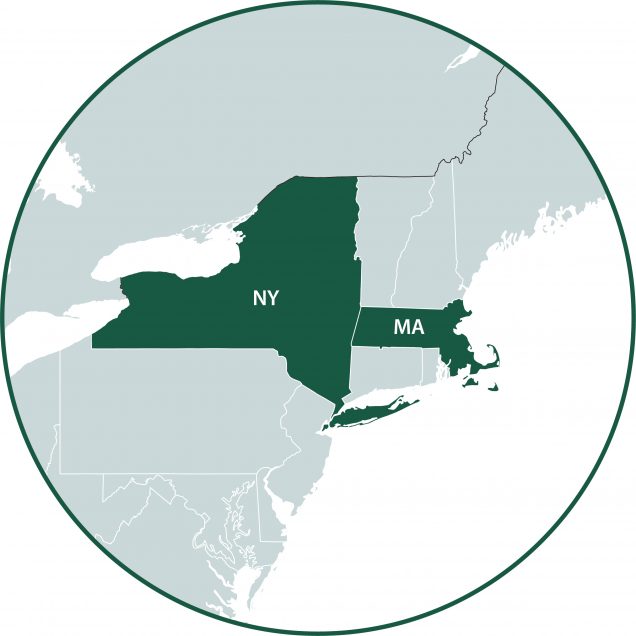Research
The shifting relationships between deer, humans, and landscapes serve as a window into the array of issues facing wildlife and land managers in the context of urbanization.
Overview
Following extirpation across much of North America, white-tailed deer (Odocoileus virginianus) are now considered overabundant in many urban and suburban environments. This growth in deer populations is linked to a variety of human activities including controls on hunting, land-uses that create favorable deer habitat (e.g., parks, stream corridors, or ‘greenbelts’), and a drop in non-human predators including wolves and mountain lions. Though the increased presence and visibility of deer is often welcomed, high populations also raise concerns about negative impacts on humans and forested ecosystems including damage to forest understory species, deer-vehicle collisions, and damage to landscaping and crops.
Although tolerance for deer populations differs within and among communities, a growing number of suburban towns have begun to implement or seek out management strategies, including hunting, to control populations. Despite its prominence as a management approach, recreational hunting’s effectiveness is limited in achieving management goals in many contexts. Our research builds new tools to understand this dilemma and will characterize the degree to which management limitations are driven by ecological, human, or landscape characteristics.
Research Questions
- What factors contribute to variations in deer density? Specifically, what is the relationship between deer density, hunter behavior, and vegetation patterns?
- How do concerns about deer and the practices of deer management vary across different actors in urban, rural, and suburban communities?
- What social and environmental factors encourage or limit changes to deer management practices?
- Given the patchwork implementation of deer management practices, at what scale is deer management most effective and why?
Methods

A better understanding of the linkages between deer, landscape characteristics, human behaviors, and policy is important for anticipating future ecological conditions and human-deer interactions, and for implementing sustainable management across multiple scales.
To understand these linkages, we conduct integrative research in Massachusetts and New York connecting ecological data collection and analysis with social science research. Data collection and modeling activities occur at two scales: a fine scale analysis that is based on data collection within 11 focal towns and a broad scale analysis that explores these interactions across the entire two-state region.
Municipal Surveys
In 2017-2020, we conducted a survey of municipal officials to learn more about deer concerns and perceptions across all of the villages towns and cities in Massachusetts and New York. The survey investigated how and why concerns about and responses to deer vary across municipalities in the Northeastern US. To learn more, check out our report on the MA Survey here.
Hunter Diary
Given that hunting plays a role in deer management, we have designed a multi-part survey to gather data on hunter behavior and decision-making throughout the hunting season in both states.
Comparative Case Analysis
In addition to the state-wide analyses, we will conduct fine-scale socio-ecological analysis in 11 focal towns across Massachusetts and New York including the following components:
Vegetation Surveys for Deer Impacts
In the focal towns, we will survey vegetation to quantify deer browsing impacts to forests and adjacent residential properties. Following specific sampling protocols, we will establish semi-permanent plots in sampled forest patches and conduct repeated browse surveys.
Herbivore Dynamics
We will use camera trap data to model deer population dynamics. With the collaboration of landowners and municipal officials, the camera traps will be strategically placed to quantify deer numbers, and understand how hunters, deer and other species interact with each other.
Deer Management Dynamics
In each focal town, we will conduct in-depth interviews and focus groups with stakeholders including town officials, large landowners, residents, and other actors regarding perspectives on deer, and deer management. We will use these research activities to understand the process of making management strategies to regulate and manage wildlife in these municipalities.
Agent-Based Modeling
We will represent cross-scale interactions among social and environmental components of deer management using agent-based modeling (ABM). We will create two distinct simulation tools that characterize human-deer-forest dynamics at both the municipal and regional scale.